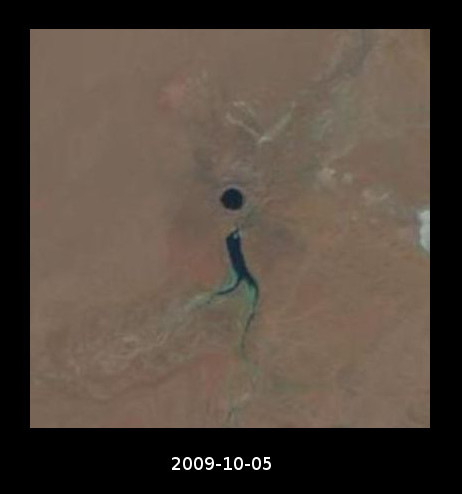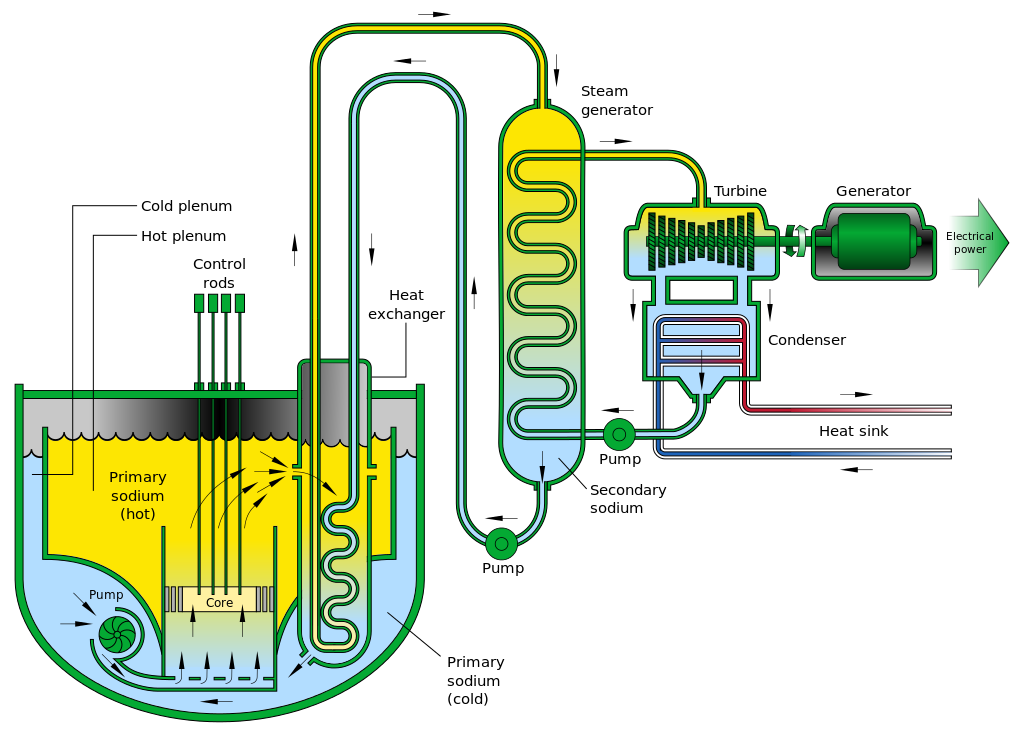
Blog
-
Geiger Readings for Sep 24, 2017
Ambient office = 112 nanosieverts per hourAmbient outside = 73 nanosieverts per hourSoil exposed to rain water = 66 nanosieverts per hourBeefsteak from Central Market = 122 nanosieverts per hourTap water = 87 nanosieverts per hourFilter water = 77 nanosieverts per hour -
Geiger Readings for Sep 23, 2017
Ambient office = 66 nanosieverts per hourAmbient outside = 145 nanosieverts per hourSoil exposed to rain water = 149 nanosieverts per hourRed potato from Central Market = 112 nanosieverts per hourTap water = 105 nanosieverts per hourFilter water = 79 nanosieverts per hourDover sole – Caught in USA = 85 nanosieverts per hour -
Nuclear Weapons 308 – In 1965, The Soviet Union Created Lake Chagan In Kazakhstan With An Underground Nuclear Bomb
I recently wrote about the Soviet Union using a nuclear warhead to extinguish a fire in a natural gas well that had resisted all other attempts to put it out and had been burning for three years. While the U.S. and other nuclear nations considered the civilian use of nuclear warhead for such things as massive earthmoving projects, the Soviet Union was the most active nation in tested such uses. On one occasion, they created an artificial lake with a nuclear explosion.
The Soviet Union had a program called “Nuclear Explosions for the National Economy” established for the explicit purpose of testing civilian uses for nuclear bombs. The program carried out one hundred and fifty six nuclear tests between 1965 and 1989.
In 1965, a one hundred and forty kiloton nuclear bomb was detonated five hundred and eighty four feet under the dry bed of the Chagan River at Chagan which is on the edge of the Semipalatinsk Test Site in Kazakhstan. The blast resulted in the formation of a crater that was one thousand three hundred and twelve feet in diameter and three hundred and twenty eight feet deep. There was a “lip” around the crater that varied from sixty five feet to one hundred and twenty five feet high. A channel was cut a nearby river so that it could fill up the crater to create the new reservoir which was named Lake Chagan.
The purpose of the detonation was to determine whether nuclear explosions would be a good way to create new reservoirs. This test was carried out with the largest bomb ever used in the Nuclear Explosions for the National Economy program and it was the very first test carried out under the program.
It has been estimated that about one fifth of the radioactive isotopes created by the blast escaped from the underground cavity. Following the blast, radioactive fallout was detected over Japan, twenty five hundred miles to the east of the test site. In 1963, the Soviet Union had signed the Limited Test Ban Treaty (LTBT) which prohibited atmospheric detonations. The U.S. accused the Soviet Union of violating the treaty. The Soviet response was that the test was underground and the amount of radioactive materials released was not significant. Although the treaty did ban any detonations that caused radioactive materials to go beyond the borders of the country conducting the test, the potential violation of the LTBT by the Soviets was eventually dropped.
While Lake Chagan shows that it is indeed possible to create new artificial lakes with the use of underground nuclear explosions, it is not really practical because the water in Lake Chagan (also known as Atomic Lake) is still radioactive and unsuitable for the use of watering livestock. It would also not be a good idea to use the water for irrigation. Today, the water of Lake Chagan is about one hundred times as radioactive as the level considered safe for drinking water. Three hundred to five hundred feet from the reservoir, the level of radioactivity drops back to the normal background level.
Arial shot of Lake Chagan:
-
Nuclear News Roundup Sep 22, 2017
Tropical storm Jose has been churning up the waters of Cape Cod Bay and creating operational problems for Pilgrim Nuclear Power Station in the process. Patriotledger.com
Following two years of planning, demolition of the West Valley Demonstration Project (WVDP) vitrification facility in New York State began last week. The work is scheduled to be completed in eight months. World-nuclear-news.org
-
Geiger Readings for Sep 22, 2017
Ambient office = 97 nanosieverts per hourAmbient outside = 141 nanosieverts per hourSoil exposed to rain water = 145 nanosieverts per hourWhite mushroom from Central Market = 116 nanosieverts per hourTap water = 95 nanosieverts per hourFilter water = 82 nanosieverts per hour -
Nuclear Reactors 305 – Generation IV Nuclear Reactors – Part 2 of 2 Parts
Part 2 of 2 Parts (Please read Part 1 first)
The second main type of Generation IV reactors is referred to as fast reactors. In a fast reactor, the fast neutrons generated by the fission reaction are directly used without a moderator to slow them down. These reactors can burn or subject to fission all the actinides (which includes uranium, plutonium and fifteen other highly radioactive heavy metals). Since it is the actinides that make nuclear waste so dangerous, burning all the actinides in the fuel can significantly reduce the bulk of nuclear waste and the longevity of its danger. On the other hand, these reactors can be configured to generate more actinides than they burn and thus they can actually “breed” fuel.
The Gas-cooled fast reactor (GFR) is helium cooled and can generate heat at the temperature of eight hundred and fifty degrees Centigrade. It is considered to be an evolution of the VHTR discussed above under thermal reactors. Special fuels are being considered and developed to withstand the high temperatures and to retain the actinides in the original fuel and actinides generated by the fission reaction. Physically, the core configurations will be pin-based, plate-based or prismatic blocks. Construction of a gas-cooled fast reactor will begin in 2018 by the European Sustainable Nuclear Industrial Initiative (ESNII).
The Sodium-cooled fast reactor (SFR) is a sodium molten-salt cooled reactor utilizing fast neutrons. A core with no moderators burns a metallic alloy of uranium and plutonium or any transuranic isotopes. Spent nuclear fuel from LWRs can be used as a fuel. When a SFR overheats, the core expands and the chain reaction slows down so it is what is called “passively safe. One of the main problems with this type of reactor is the fact that the sodium which is cooling the core will react explosively if it comes into contact with water. The liquid metal coolant does allow the reactor to operate at atmospheric pressure which is a plus. India has been researching this type of reactor since the 1980s. They are building a prototype of a commercial reactor and are planning on building six commercial reactors in the near future. The ESNII will make a final decision on the construction of an experimental SFR in 2019. China purchased an SFR from Russia that went operational in 2014.
The Lead-cooled fast reactor (LFR) is a fast neutron reactor cooled by liquid lead or lead/bismuth eutectic in a closed fuel cycle. The fuel is metal or nitride-based composed of fertile uranium and transuranics. Natural convection cools the reactor core and they could be designed to generate heat at a temperature of eight hundred degrees Centigrade for hydrogen production. They can be used in batteries of small reactors or as one large reactor. The ESNII is funding a lead-cooled fast reactor which will be built in Belgium. Russia is building two LFRs, one of which has been redesigned to be proliferation resistant.
The major benefits of the Generation IV reactors are expected to be reduction of the life span and volume of nuclear waste, up to three times more energy from the same amount of fuel, a broader range of possible fuels, the ability to consume spent nuclear fuel from other reactors, and greater safety.
Some of the disadvantages of Generation IV reactors include danger of fire and explosions if sodium coolant contacts water. Lead is not dangerous in contact with water but when compared to sodium, it has higher viscosity, higher density, less heat capacity and more radioactive neutron activation products.
Pool design Sodium-Cooled Fast Reactor:
-
Geiger Readings for Sep 21, 2017
Ambient office = 97 nanosieverts per hourAmbient outside = 141 nanosieverts per hourSoil exposed to rain water = 145 nanosieverts per hourCarrot from Central Market = 116 nanosieverts per hourTap water = 95 nanosieverts per hourFilter water = 82 nanosieverts per hour





